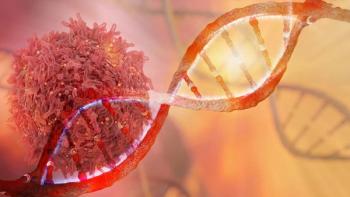
Using Ultrasound Energy to Deliver Gene Therapy
Investigators in Pittsburgh are now reporting it may be possible to delivery gene therapy to cancer patients in an entirely new way. Instead of using viruses as vehicles, it may be possible to use ultrasound energy.
Investigators in Pittsburgh are now reporting it may be possible to delivery gene therapy to cancer patients in an entirely new way. Instead of using viruses as vehicles, it may be possible to use ultrasound energy. It is hoped this could be a gentler approach, producing fewer adverse side effects.
The investigators are combining ultrasound energy and microbubbles to poke holes in cells. In a study
“We can use ultrasound energy in combination with small, gas-filled bubbles to selectively open up cells to allow the delivery of therapeutic agents,” said lead study author Brandon Helfield, PhD, who is a postdoctoral fellow at the Center for Ultrasound Molecular Imaging and Therapeutics at the University of Pittsburgh Medical Center (UPMC), in a
Many current gene therapy approaches employ viruses to gain access inside cells, which can cause severe side effects, including inflammatory immune system reactions. To address this issue, researchers have developed gene-loaded intravascular microbubbles that can be targeted to release their payloads by direct navigation of focused ultrasound energy.
The investigators have identified direct correlations between ultrasound-stimulated encapsulated microbubble oscillation physics and cellular membrane permeability. This was something they could view through simultaneous microscopy of these two processes over their intrinsic physical timescales.
Using an ultrafast imaging camera capable of reaching speeds up to 25 million frames per second, researchers examined the biophysics of sonoporation. They determined that the oscillating bubbles need to generate a minimum amount of localized shear stress, beyond which cell membranes perforate and allow entry of a targeted therapeutic.
The investigators write that the shear stress threshold exhibits an inverse square root relation to the number of oscillation cycles and an approximately linear dependence on ultrasound frequency from 0.5-2 MHz. They demonstrated a sonoporation event directly results in the immediate generation of membrane pores through both apical and basal cell membrane layers that reseal along their lateral area.
The researchers hope this new approach can be safely adopted for gene therapy for cancer patients. They also are hoping these initial findings will help facilitate the intelligent design of treatment protocols and microbubble fabrication in the field of oncology.
Newsletter
Stay up to date on recent advances in the multidisciplinary approach to cancer.
















































































